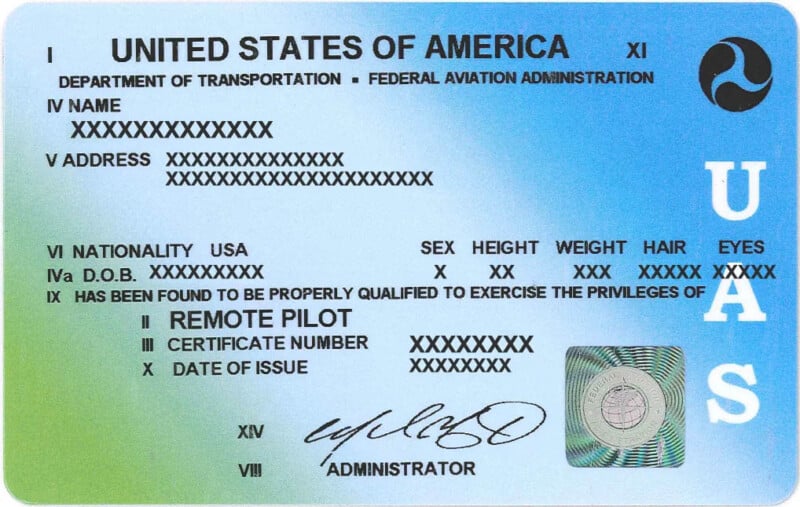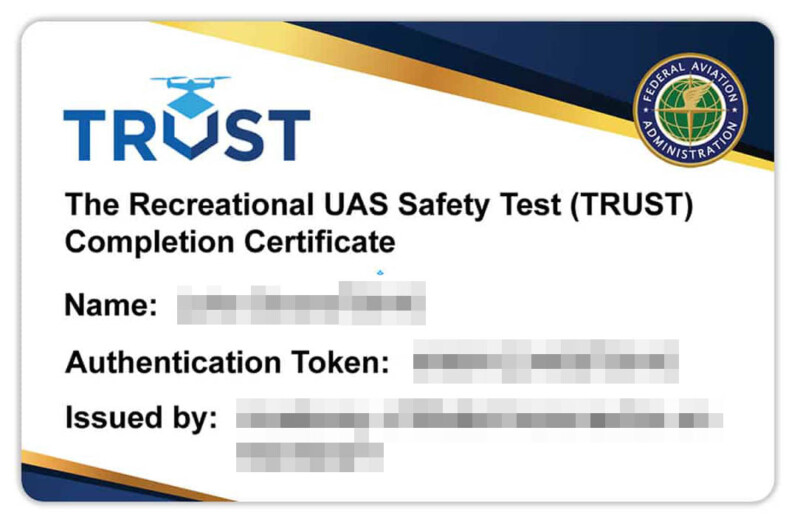![]()
Drones are awesome. Much more than just being fun novelties you might see buzzing around your neighbor’s backyard piloted by a young child, they are amazing creative tools that allow for camera shots that you simply cannot get in any other way, and are used in everything from music videos to live sports to the biggest blockbuster films.
What you might not know is that to operate a drone, or officially, a Small Unmanned Aerial System (sUAS) commercially, both in the United States and many other countries, you must be licensed by your country’s aviation authority. In the United States, this involves studying, taking, and passing a test administered by the Federal Aviation Administration, or FAA, to show that you are capable of operating a drone safely and responsibly under the regulations set forth in 14 CFR Part 107, commonly abbreviated as Part 107.
In this article, I’ll be going over the entire process of getting into the air and obtaining your FAA Part 107 Remote Pilot Certificate from start to finish. If you live in another country, please consult your local regulations for more information.
Table of Contents
Basic Qualifications
In the US, anyone can fly an sUAS as long as they’ve completed the paperwork. However, in order to obtain a Part 107 certificate and operate commercially, you must be at least 16 years of age, able to speak, read, and understand English, and be in good enough physical and mental condition to safely fly an sUAS. Pretty straightforward.

Commercial Use?
One of the biggest sticking points for drone pilots is the notion of “commercial use”. Conventional wisdom would dictate that the definition should be pretty obvious — any time a pilot uses their drone to make money. However, as with many federal regulations, the issue is much more complicated than that and is subject to interpretation.
Firstly, it’s important to know that commercial use does indeed encompass any time you are hired to use your drone for a specific purpose. Photography, cinematography, inspections, you name it. If you’re paid, it’s commercial. However, this classification need not involve money changing hands. For example, if I decide I’m going to help my friend’s business by surveying their location free of charge, I’ve just used my drone commercially. If I’m a freelancer and I choose to go out and fly to gather footage for my portfolio, it can be argued that this constitutes commercial use, since I am promoting my services with the aid of a drone.
The long and the short of the matter is that unless you are flying purely recreationally-that is, for fun, with no intention of being paid and no intention of using your activity to promote any kind of business in the future, it’s generally safe to assume that your use is a commercial one. Intent is a key component in classifying your flight as far as the FAA is concerned, so it’s worth asking yourself before you take off what your intent really is, as unlicensed commercial use can come with some hefty penalties.
It’s also important to know that a licensed commercial pilot can still fly under recreational rules if a specific flight is non-commercial. This is beneficial because the rules governing recreational flight (USC 44809) are much less complicated than the rules governing commercial flight.
![]()
Prepare for Liftoff
Before being allowed to fly an sUAS, even recreationally, you must complete The Recreational UAS Safety Test, or TRUST. In simple terms, this is a short training that can be completed in less than an hour that goes over basic safety information involved in operating any kind of small remotely-controlled aircraft-don’t fly in dangerous areas, don’t fly close to manned aircraft, and so on. After a short series of video lessons, you’ll be required to take a quiz on what you were taught. Don’t worry, you can retry as many times as you need to.
![]()
After you complete this training, you’ll be given an electronic certificate as proof of your completion and you’ll be allowed to fly your sUAS recreationally. Make sure to keep a copy of this certificate handy, as you will be required to present it to law enforcement if they ask to see it.

According to FAA regulations, any aircraft weighing 250g or more must be registered, and any aircraft used for commercial purposes must be registered regardless of weight. Registrations can be completed at the FAA DroneZone website. If flying recreationally, a pilot may place all of their aircraft under one registration. If flying commercially under Part 107, each aircraft needs to be registered separately. Registrations are $5 and last for 3 years.
![]()
At this point, if you’re a recreational pilot, you’re finished! Go have fun, and be safe. If you plan to fly commercially, read on.
Class Is Now in Session
Now comes the tough part.
You’ll now need to sign up for a course to learn all of the ins and outs of Part 107. There are far too many regulations to get into here, but suffice it to say that you will likely be studying for 20 hours or more, learning everything from the basic principles of aerodynamics to how to read complex navigational charts and decipher the messages broadcast by air traffic control.
There are a number of these courses available. Some are held in person and involve hands-on time with a real drone and an instructor to guide you but command a correspondingly high fee. Others are online-only and are essentially an XL version of the TRUST training you took earlier — these are usually inexpensive by comparison. Both can be effective, but it’s important to consider your options and choose the environment that’s right for you. Personally, I chose an online course for reasons of cost and flexibility, aside from the fact that I was already an experienced pilot and didn’t need the hands-on training.
Many of these courses will have some form of “Pass Guarantee”, meaning that if you pass the course but do not pass the official FAA test, you will be refunded and/or have your retest fee paid for by the course provider. This is good for providing peace of mind, as for many people, investing in the training and testing involved in a license isn’t cheap, and it’s nice to know that you have a second chance.
Once you complete your coursework, you’ll need to create an account in the FAA Integrated Airman Certification and Rating Application, or IACRA. This will allow you to link your identity to the test you’re about to take.
![]()
Testing, Testing
Now we’re in the final stretch.
After you have completed your course of study, you’ll need to make an appointment with an official testing center. As of the time of writing, there is only one company authorized to administer the exam, that being PSI. On their site, you can find a nearby testing center, make an appointment, and find general information about the test. The testing fee is, at the time of writing, $175.
The test itself consists of 60 multiple-choice questions picked from a very large pool of possible questions, and you will be given a number of items to help you, among them a compass, calculator, ruler, notepad, and test supplement booklet containing charts, diagrams, and other illustrations related to the questions asked. You will have 120 minutes to take the test, which is plenty of time.
The key thing to remember is to carefully read through the questions and assume that every word is important until you’ve been able to rule it out. The answers to many questions are based on technicalities, and this is by design. Overall, you will need to score at least 70% on the test to pass. If you do not pass, you’ll need to wait 14 calendar days for a retest and pay the testing fee again.
Once you pass, you’ll simply need to log back into IACRA and finish filling out your application, including the identification number from your test results. Then, just wait for your hard card to arrive in the mail. Your license is valid for 24 calendar months from the date of your test, at which time you’ll need to complete the recurrent safety training at FAASafety.gov to maintain your certification.
![]()
That’s All She Wrote
Finally, we’re done! Now, you’re legal to fly an sUAS commercially in the US. This affords you several great perks, including the ability to request clearance through the Low Altitude Authorization and Notification Capability, or LAANC, to fly in controlled airspace (which, if you’re in a major city like I am, is pretty much all the airspace). Just be sure to keep your registrations and your license current, and you’re good to go.
Now get out there and fly.
Image credits: Photo from Depositphotos
